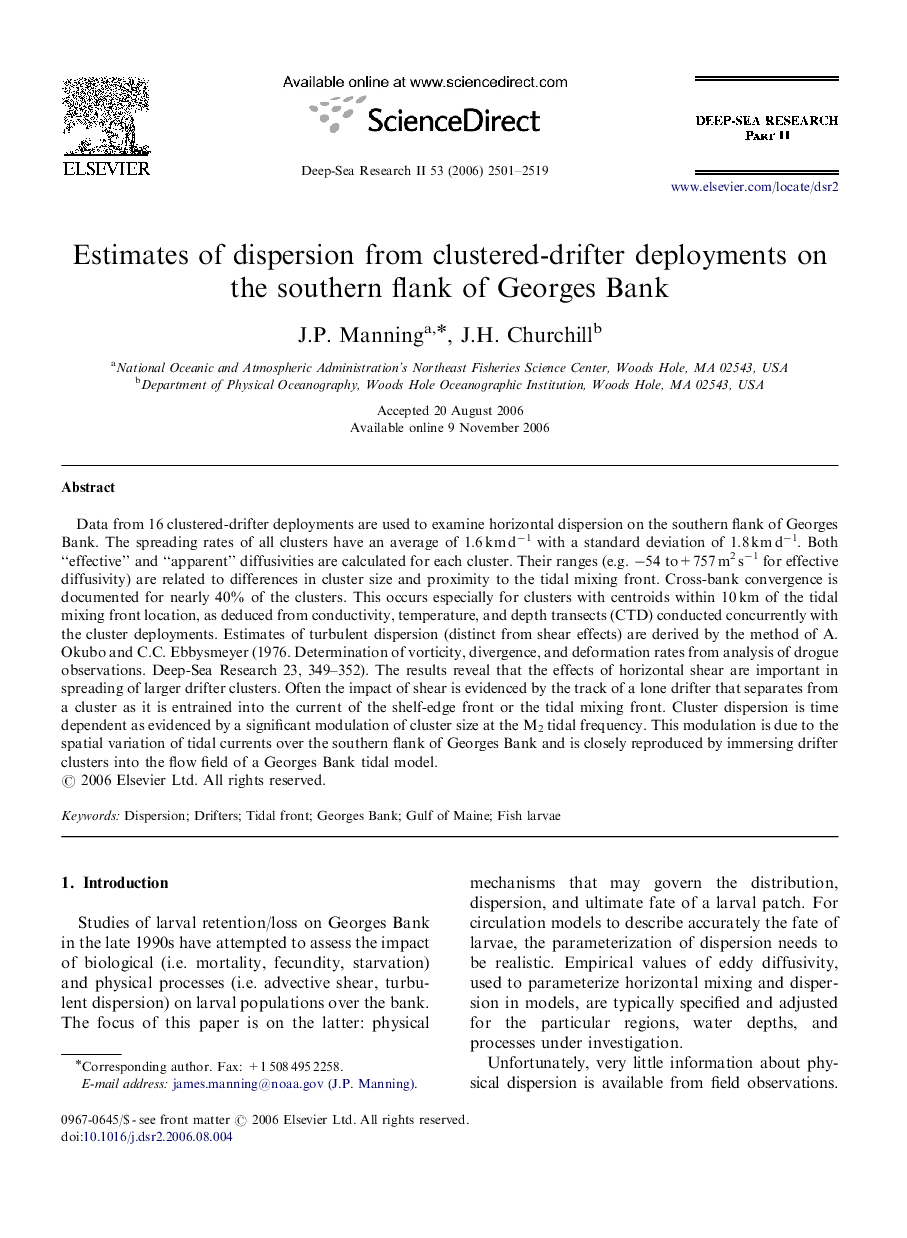| Article ID | Journal | Published Year | Pages | File Type |
|---|---|---|---|---|
| 4538244 | Deep Sea Research Part II: Topical Studies in Oceanography | 2006 | 19 Pages |
Abstract
Data from 16 clustered-drifter deployments are used to examine horizontal dispersion on the southern flank of Georges Bank. The spreading rates of all clusters have an average of 1.6 km dâ1 with a standard deviation of 1.8 km dâ1. Both “effective” and “apparent” diffusivities are calculated for each cluster. Their ranges (e.g. â54 to+757 m2 sâ1 for effective diffusivity) are related to differences in cluster size and proximity to the tidal mixing front. Cross-bank convergence is documented for nearly 40% of the clusters. This occurs especially for clusters with centroids within 10 km of the tidal mixing front location, as deduced from conductivity, temperature, and depth transects (CTD) conducted concurrently with the cluster deployments. Estimates of turbulent dispersion (distinct from shear effects) are derived by the method of A. Okubo and C.C. Ebbysmeyer (1976. Determination of vorticity, divergence, and deformation rates from analysis of drogue observations. Deep-Sea Research 23, 349-352). The results reveal that the effects of horizontal shear are important in spreading of larger drifter clusters. Often the impact of shear is evidenced by the track of a lone drifter that separates from a cluster as it is entrained into the current of the shelf-edge front or the tidal mixing front. Cluster dispersion is time dependent as evidenced by a significant modulation of cluster size at the M2 tidal frequency. This modulation is due to the spatial variation of tidal currents over the southern flank of Georges Bank and is closely reproduced by immersing drifter clusters into the flow field of a Georges Bank tidal model.
Related Topics
Physical Sciences and Engineering
Earth and Planetary Sciences
Geology
Authors
J.P. Manning, J.H. Churchill,
